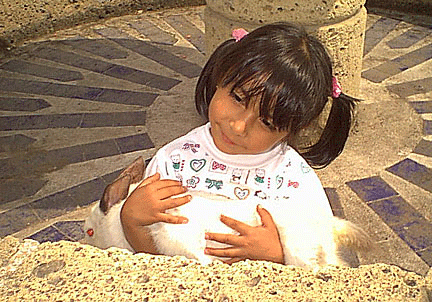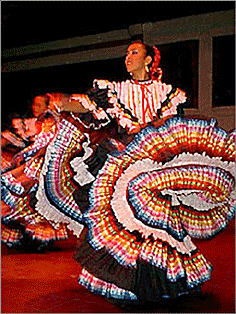
8
TIPS FOR BETTER DIGITAL PHOTOS
While the basic principles of photography still
apply, digital cameras have their own unique characteristics that differ
from traditional film cameras.
 1.
Move in closer. Most pictures will benefit if you take a few
steps forward. Having your subject fill most the frame helps your viewer
understand your photo and provides details that are often more
interesting than an overall view. To get the clearest picture, use the
camera's optical zoom if you can't move closer to your subject.
1.
Move in closer. Most pictures will benefit if you take a few
steps forward. Having your subject fill most the frame helps your viewer
understand your photo and provides details that are often more
interesting than an overall view. To get the clearest picture, use the
camera's optical zoom if you can't move closer to your subject.
2. Use your viewfinder. A digital camera's LCD screen uses lots
of battery power so to maximize battery life, use the camera's
viewfinder.
3. Anticipate the moment. Digital cameras have an inherent delay
between pressing the shutter button and when the camera records the
image on the memory card. Anticipate the action and press the shutter
button just before the peak of the action.
4.
Use available light when possible. Digital cameras are much
more sensitive to light than film cameras. This enables you to shoot
without flash in about 85 percent of the time.

5.
Shoot at your camera’s highest resolution. If you want to
print your images, you'll get the best results from a larger file. You
can always decrease the resolution of the image on your computer to
email them, but starting off with a low-resolution image does not give
you the flexibility to print your photo.
 6.
Shoot as many photos as possible.
The more images you shoot,
the better your chances are of getting that special shot. Because you
don't incur any costs until you print your images, if
you so desire, so take as many shots as
you can.
6.
Shoot as many photos as possible.
The more images you shoot,
the better your chances are of getting that special shot. Because you
don't incur any costs until you print your images, if
you so desire, so take as many shots as
you can.
7. Delete unwanted images as you go. Immediately delete images
you don't want to minimize the task of deleting images because you're
running out of room on your memory card. When in doubt, save the image
until you can view it on your computer monitor.
8.
Buy moderately sized memory cards.
Avoid purchasing overly
large memory cards. The chances of losing all your images are much
greater should a larger card fail. Instead, use memory cards that hold
about 200-300 images.
Whether you're new to photography or an experienced picture taker, the
important thing to remember is that digital cameras offer shooting
freedom and flexibility. Experiment with your camera. Try new
techniques. And above all, remember to have fun.

